Maybe your gaming laptop doesn’t have enough storage. Or you simply want an easy way to make your game library portable. An external SSD can fix both of these issues (and more) by providing an easy way to expand storage that you can take on the go.
But choosing an external SSD means sorting through a dizzying array of options, and making a poor choice can leave you feeling hard done by. Lucky for you, we’ve done the testing and can offer some sure-fire recommendations that are guaranteed to help, and not hinder, your gaming setup.
Why you should trust us: We are PCWorld. Our reviewers have been putting computer hardware through its paces for decades. Our external drive evaluations are thorough and rigorous, testing the limits of every product — from performance benchmarks to the practicalities of regular use. As consumers ourselves, we know what makes a product exceptional. For more about our testing process, scroll to the bottom of this article.
Crucial X10 Pro – Best external SSD for gaming
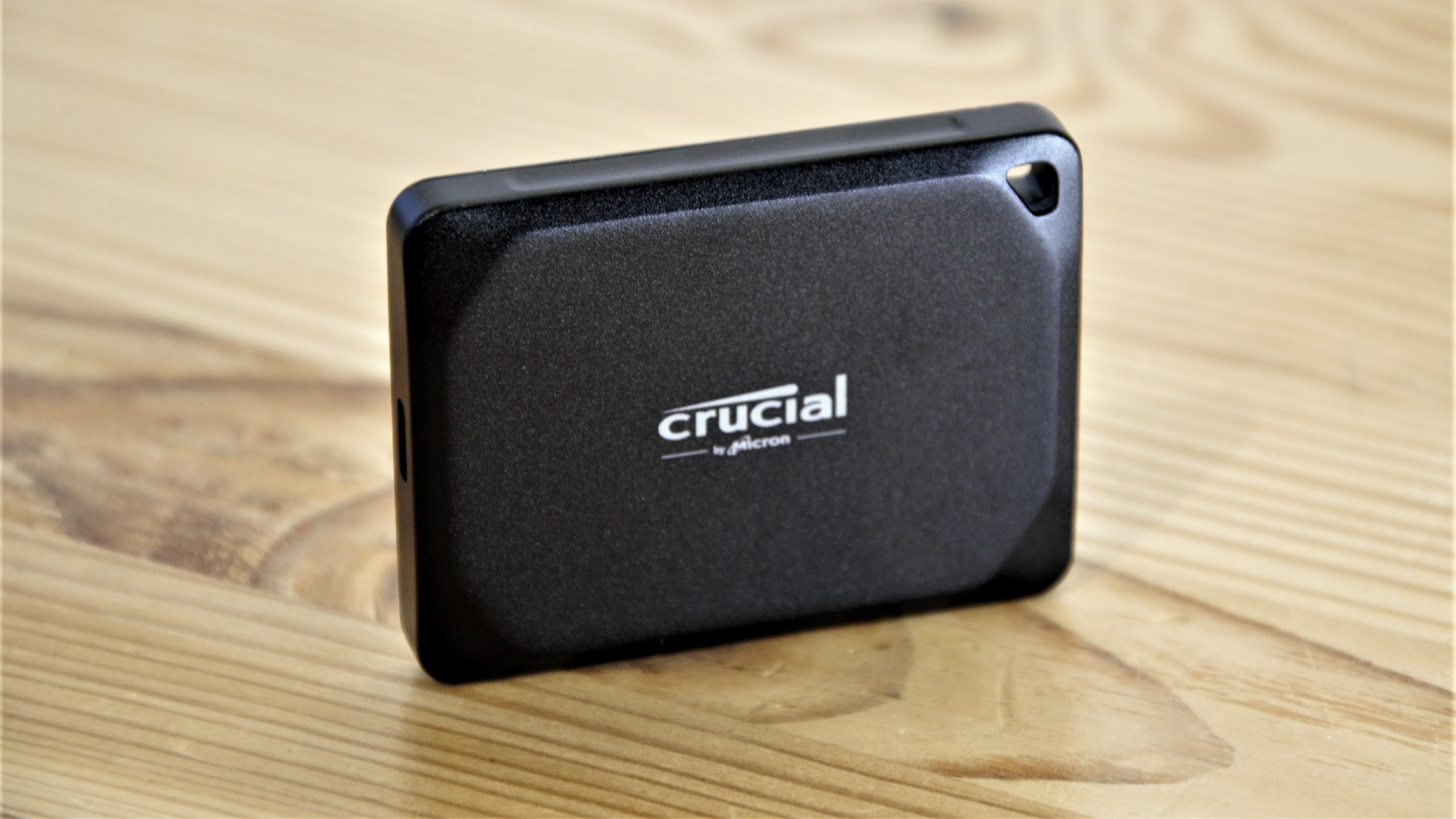
Pros
- Close to Thunderbolt 3 SSD performance in real-world transfers
- Super-svelte form factor
- IP55 rated to resist dust and spray
Cons
- Pricier than 10Gbps SSDs
- No Type-A adapter included
The WD Black P50 Game Drive has been parked at the top of our list for a long time. And not just because it’s called “Game Drive.” But now the Crucial X10 has come along to knock the P50 off its perch, by offering superior performance at a better price.
The Crucial X10 shined brightest in our 48GB file transfers, besting the 20Gbps competitive set, and even nearing Thunderbolt 3 levels. With this kind of real-world performance, plus a compact, rugged (IP55), anti-slip exterior, you can see why we think the Crucial X10 is the best external SSD for gamers.
Seagate FireCuda Gaming SSD (1TB) – Best premium external SSD for gaming
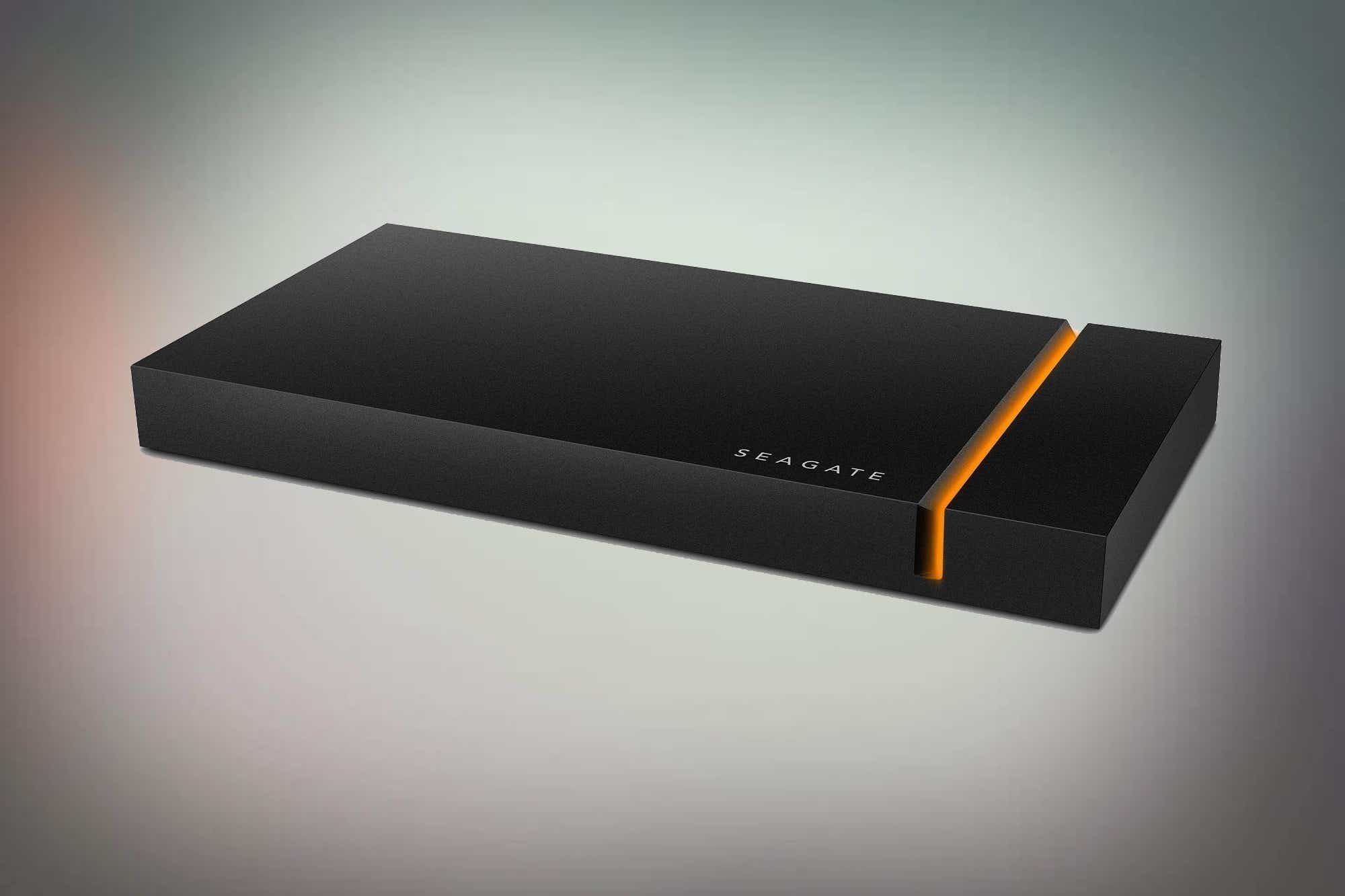
Pros
- Drop-dead gorgeous
- 2GBps transfers via SuperSpeed USB 20Gbps
Cons
- Pricey
- Superspeed USB 20Gbps ports are few and far between
Seagate’s FireCuda Gaming SSD is a worthy alternative, but it has a much steeper price tag for similar performance. However, the FireCuda is an absolutely stunning external SSD and is worthy of a place on any desktop. It’s not just a pretty façade though—it’s compatible with a SuperSpeed USB 20Gbps port, meaning it can attain transfer rates of up to 2GBps. It’s certainly the coolest-looking external SSD on this list.
Teamgroup M200 – Best budget external SSD for gaming
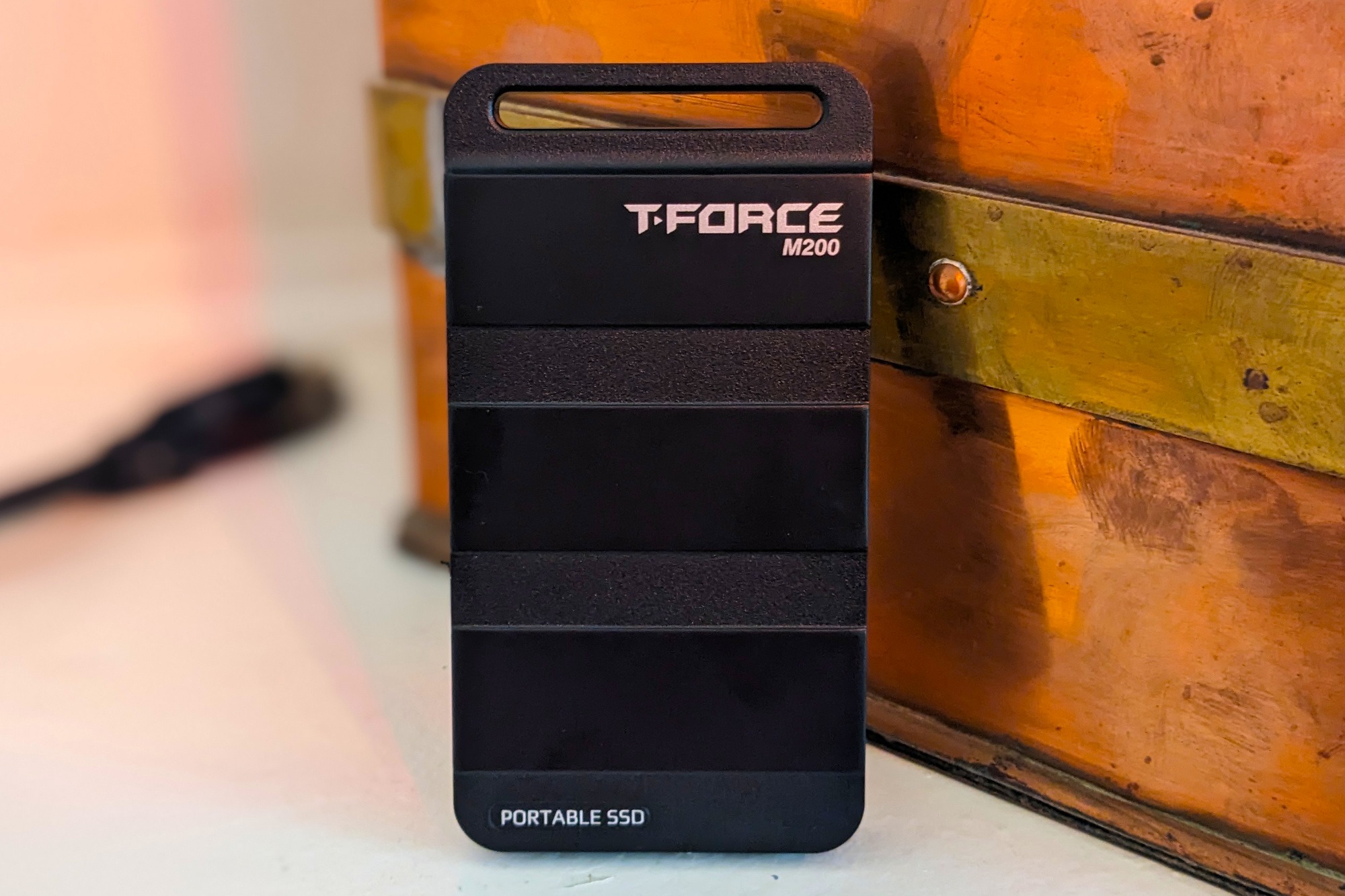
Pros
- Fast everyday performance
- Available in up to 8TB (eventually) capacity
- Attractively styled
Cons
- No TBW rating
- Company will change components if shortages demand
- Writes slow to 200MBps off cache
The Teamgroup M200 provides excellent bang for your buck with 20Gbps transfer rates and up to 4TB of storage for a very reasonable price. It has great everyday performance, too.
Its slick military-style design is based on the CheyTac M200 sniper rifle—a perfect fit for those late night frag sessions. Unfortunately, Teamgroup doesn’t provide a TBW rating or official IP rating for the M200 so it’s more difficult to compare it as a whole to its competitors. However the M200 is a fast, extremely well priced external SSD with a gamer-friendly design that will look good and perform well in almost any setup.
Adata Elite SE880 SSD – Most portable external SSD for gaming
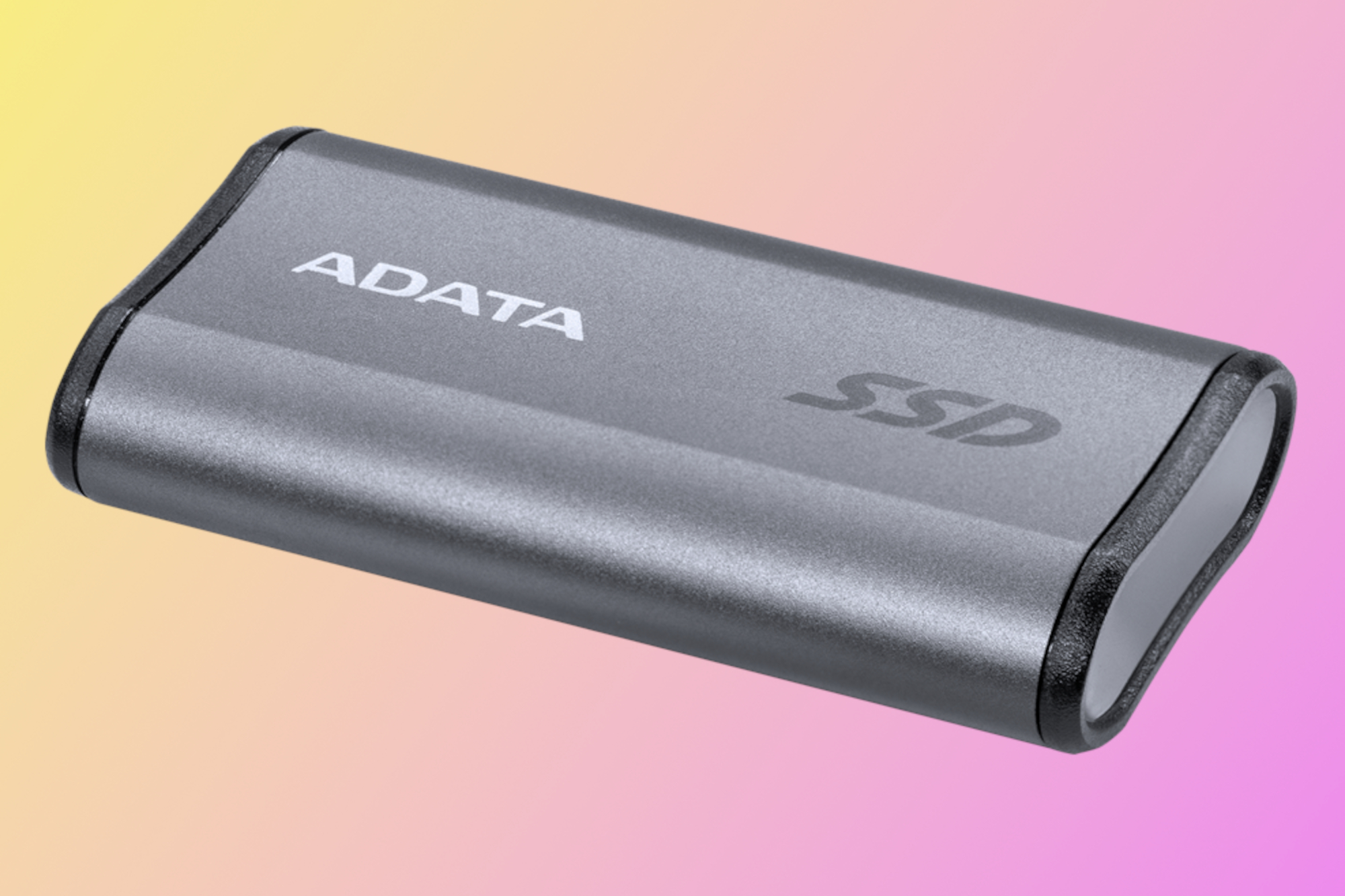
Pros
- Very fast, over-20Gbps USB connection
- Extremely small form factor
- 5-year warranty
Cons
- Slows considerably during long contiguous writes
- Somewhat low TBW rating
The Crucial X6 might be small, but it still can’t match the Adata’s Elite SE880 for portability. Measuring in at only 2.55 inches long, 1.38 inches wide, and 0.48 inches thick, it resembles a USB thumb drive more than a standard external SSD. It also weighs a featherlight 1.1 ounces—making it easy to forget it’s even in your pocket.
In terms of performance, the Elite SE880 is quick to handle everyday tasks but slows down during long writes. In a real-world 48GB transfer test, the drive came through with flying colors, but it lost a lot of ground in the longer contiguous write tests. This means that photo and video pros with large files to transfer might want to consider other options.
SanDisk Pro-G40 – Best USB/Thunderbolt combo

Pros
- Both 10Gbps and Thunderbolt 3/4 connectivity
- Fast, especially over Thunderbolt
- IP68 weather and dust resistant
Cons
- Pricey
The SanDisk Pro-G40 not only gives you superfast 40Gbps performance but it also allows you the flexibility to switch to a slower, less power-hungry USB connection, as well. It’s easily the best dual-bus compatibility drive that we’ve ever tested. The G40 provides the freedom of choice between optimizing speed via Thunderbolt 3/4 at up to 40Gbps or opting for the power-saving 10Gbps via USB. In our 48GB and 450GB transfer tests, the drive absolutely blew away the competition when connected with Thunderbolt.
If you decide to take the Pro-G40 on the road for some tougher outings you can rest assured it’ll be just fine given its IP68 rating for weather and dust resistance. Thunderbolt drives are never really cheap and SanDisk’s Pro-G40 is no exception. But it’s absolutely worth it if you value performance above cost or just need the versatility of a dual-bus SSD.
How we test external SSD game performance
The biggest question you want to know is, how much does using an external drive hurt game performance. To give us an idea of how much it matters, we used UL’s new 3DMark Storage Benchmark. To create the benchmark, UL essentially records the drive access patterns during several common gaming tasks to make “traces.” These drive-access traces are then run on the tested storage device multiple times to duplicate the patterns without having to actually load the game.
For its test, 3DMark reproduces what happens loading to the start menus of Battlefield V, Call of Duty: Black Ops 4, and Overwatch. 3DMark Storage also tests using OBS, or Open Broadcast System, to record Overwatch being played at 1080p resolution at 60fps, installing The Outer Worlds from the Epic launcher, and saving a game in The Outer Worlds. For the final test, 3DMark Storage tests copying the Steam folder for Counter-Strike: Global Offensive from an external SSD to the target drive.
We used a 12th-gen Intel Core i9-12900K running Windows 11 on an Asus ROG Maximus Z690 Hero motherboard. The board features native Thunderbolt 4 and USB 3.2 10Gbps ports. We added a Silverstone ECU06 for USB 3.2 SuperSpeed 20Gbps support. We then used a Vantec M.2 NVMe SSD to USB 3.2 Gen2x2 20G Type C enclosure with a Western Digital SN700 NVMe SSD to test USB 3.2 20Gbps and 10Gbps performance. We also installed the same SN700 into a PCIe 3.0 riser card to test its native performance. This gives you an idea of how much you lose going from being installed inside the laptop or PC compared to using a USB port. For added contrast, we also ran 3DMark Storage on an older Plextor PX-512M7VG SATA SSD inside of a Silverstone MS09 SATA enclosure that was plugged into a USB 3.2 10Gbps port. And because you want to know how slow a hard drive would be, we also ran the same test on a Western Digital 14TB EasyStore hard drive plugged into a USB 3.2 10Gbps port. The EasyStore is actually limited to USB 3.2 SuperSpeed 5Gbps.
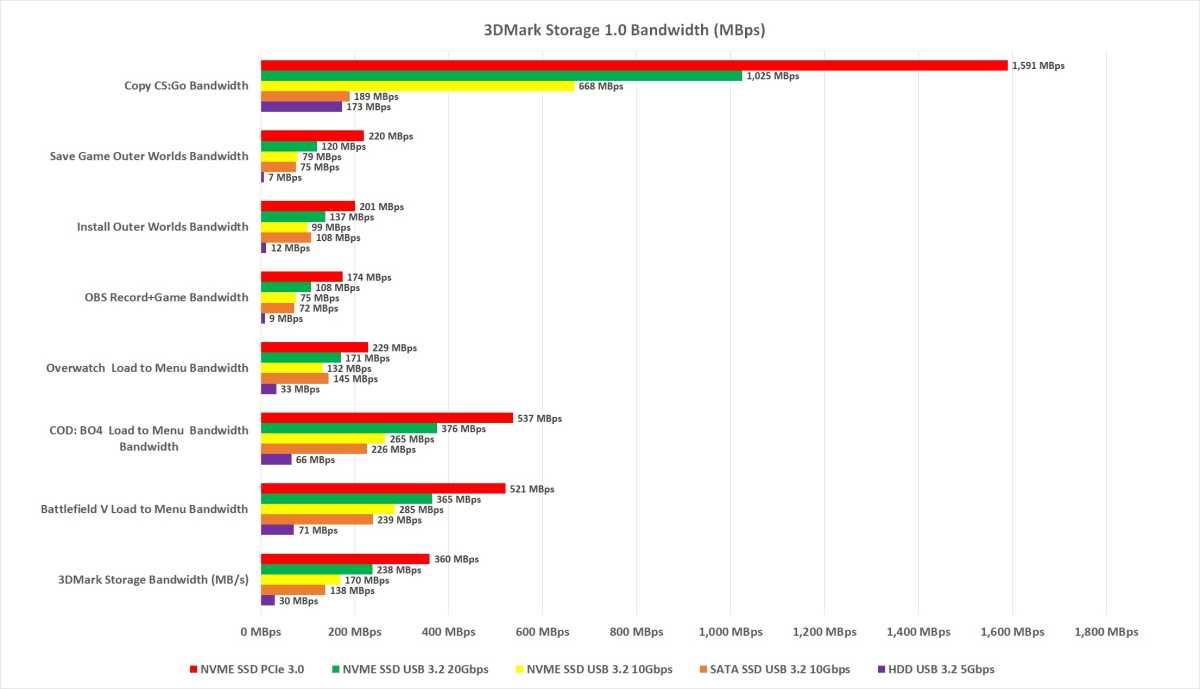
IDG
What should you make of the above results? Well, clearly if you can install an SSD inside of your PC, you’ll get the most performance out of it. But you should consider some of the context. If you’re only looking at the big long red bar at the top of the chart, consider that the particular test is measuring what would happen if you copied a large folder of files to the SSD. For most people, that’s only done once in a while.
The more common scenario is waiting for a game to launch. Running an internal NVMe drive will still be faster, but the gap closes a little. Between the three popular USB interfaces: USB 20Gbps, USB 10Gbps, and SATA on USB 10Gbps, the fastest is USB 3.2 20Gbps. With a USB 3.2 20Gbps SSD, you might see Battlefield V shave 25 percent of the load time versus a USB 3.2 10Gbps drive. Of course, performance is also game dependent. For instance, both Call of Duty and Battlefield see 45 percent or so greater bandwidth on the internal SSD, but with the less graphically intense Overwatch, it’s closer to 30 percent.
The other surprise is the performance of the SATA SSD versus the NVMe SSD when the NVMe SSD is in a USB 3.2 10Gbps port. In game loads, saves, and install scenarios, they’re fairly close. The NVMe external SSD does open up to huge lead over the slower SATA once you move to a task where you’re copying a huge amount of files—such as the CS:GO results. But again, how often do you do that?
Of course we can’t leave this without pointing out just horrible hard drives are. Would it be more improved with a faster hard drive? Unlikely. The very minimum you should use if storing games on an external drive is a SATA SSD, so don’t run a game from your external hard drive unless you like to wait for everything.
